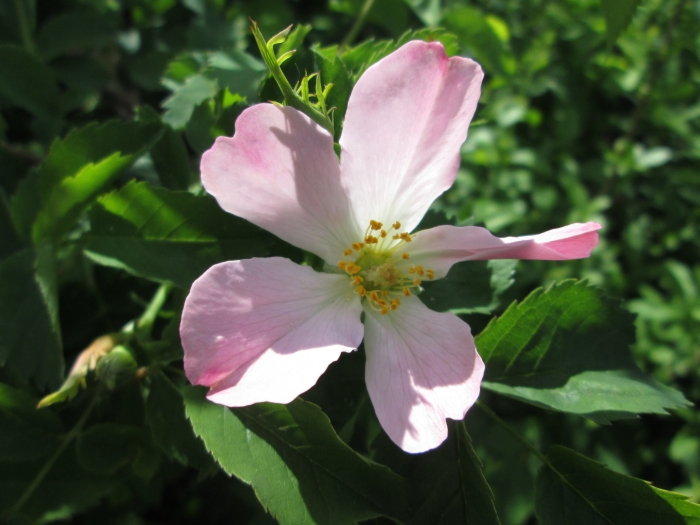Dog Rose
(Rosa canina)
Dog Rose (Rosa canina)
/
/

Andreas Rockstein
CC BY-SA 4.0

















































































Estimated Native Range
Summary
The dog rose is valued for its ornamental flowers, wildlife support, and the rose hips, which are high in vitamin C and can be used to make syrups, jellies, and teas. It is commonly used in hedgerows, wildlife gardens, and as a rootstock for grafting cultivated roses. This rose is adaptable to various soil types, including heavy clay, but requires well-drained conditions and does not tolerate waterlogged or very dry soils. It thrives in full sun but will not flower or fruit well in deep shade. It is hardy to zone 3 in the UK (USDA hardiness zone 3-7). Dog rose can be susceptible to common rose diseases such as black spot and powdery mildew, and may also suffer from pest infestations like aphids and sawflies.CC BY-SA 4.0
Plant Description
- Plant Type: Vine, Subshrub
- Height: 3-15 feet
- Width: 7-15 feet
- Growth Rate: Rapid
- Flower Color: Pink, White
- Flowering Season: Spring, Summer
- Leaf Retention: Deciduous
Growth Requirements
- Sun: Full Sun, Part Shade
- Water: Medium
- Drainage: Medium
Common Uses
Bank Stabilization, Bee Garden, Bird Garden, Butterfly Garden, Drought Tolerant, Edible*Disclaimer: Easyscape's listed plant edibility is for informational use. Always verify the safety and proper identification of any plant before consumption., Fragrant, Groundcover, Hedges, Salt Tolerant, Showy Flowers, Water Garden
Natural Habitat
Habitats including grasslands, scrub, hedges, and forest margins
Other Names
Common Names: Dog-Rose, Canker Rose, Common Briar, Dog Briar, Hunde-Rose, Hundsrose, Hunds-Rose, Koiranruusut, Rosier Des Chiens, Églantier Commun
Scientific Names: , Rosa canina, Rosa mexicana, Rosa novella, Rosa canina var. glandulosa, Rosa lutetiana, Rosa communis, Rosa cladoleia, Rosa sphaerica, Rosa ×urbica var. trichoneura
GBIF Accepted Name: Rosa canina L.